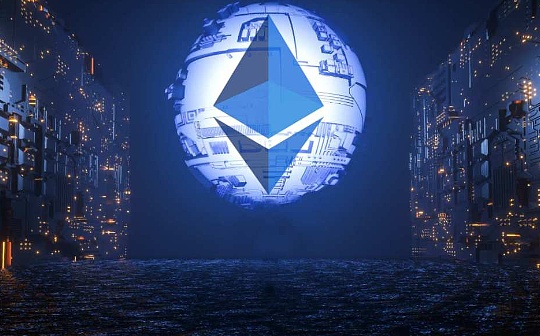Sonic launches 200 million token airdrops. How can ordinary people maximize their returns?

Reprinted from panewslab
04/24/2025·16DSonic, the star project of Layer 1 track, has reached nearly $1 billion in TVL in 4 months. It is not only perfectly compatible with EVM, but also provides a breakthrough fee sharing mechanism.
The ongoing $200 million token airdrop program and stablecoin up to 150% annualized income strategy provide a rare win-win opportunity for "return + airdrop".
This article will analyze Sonic's technical advantages and how to obtain high-yield stablecoin strategies through simple operations.
1. Project background
Sonic (formerly Fantom) was founded by Michael Kong in 2018 with the goal of breaking through the bottleneck of Ethereum's scalability. After subsequent twists and turns, it was upgraded to the current Sonic high-performance Layer-1 with the help of Andre Cronje.
2. Technical Highlights
Sonic's customized technology stack (dedicated virtual machines, databases, consensus mechanisms) is fully compatible with EVM. As an EVM blockchain with the best performance, Sonic supports over 10,000 TPS, with a confirmation time of <1 second, perfectly adapted to high-frequency scenarios in DeFi and Web3 gaming.
The Fee Monetization (FeeM) mechanism subverts tradition, and developers can earn 90% of the network fees generated by the application, avoiding the high cost and complex interoperability problems of "application chain".
Sonic supports native account abstraction (AA) to enhance the interactive experience. Fee subsidies allow Sonic or agreement to pay user transaction fees, lowering the entry threshold and you can experience it without preparing $S. Dynamic fees give applications the ability to flexibly adjust user fees and are suitable for different scenarios.
3. Airdrop activity
Sonic launched a points program involving $200 million airdrops for more than 1 year, aiming to inspire users and developers and drive ecological growth.
Users can earn Passive Points by holding or using whitelisted assets (such as scUSD, USDC.e, scETH). Activity Points are obtained through on-chain interactions such as transactions, staking or providing liquidity. After the end of each quarter, points can be converted to $S tokens.
Developers compete for airdrop share through Sonic Gems, and GEMS can be redeemed for $S and distributed to users of the corresponding dapp.
25% of the tokens obtained by user points are unlocked immediately, and the remaining 75% are released linearly in NFT form 270 days. Airdrop is expected to take place in June, and NFTs with 75% of tokens may be sold at a low price, and there may be a chance to buy at the bottom of $S.
Note when obtaining points: The liquidity pool requires that both tokens are whitelisted assets (such as S-USDC), otherwise no points will be counted; WETH, USDT, etc. only earn Activity Points, not Passive Points.
4. Interaction strategy
High yield stablecoin strategy
4.1 Providing liquidity
@SwapXfi provides bUSDC.e-20/wstkscUSD or aSonUSDC/wstkscUSD, which not only has high APR returns (16.7% and 22.27% respectively) and can also earn 12x sonic points, 1.5x Rings points and SwapX airdrops.
Let me briefly talk about the operation steps:
First, find the S/USDC lending pair with id (id is the number in the first column) on @SiloFinance, and then you can get the bUSDC by depositing it in USDC, then depositing it in USDC in @Rings_Protocol to get the scUSDC, then pledge the scUSDC to get stkscUSD, and then pledge the obtained stkscUSD once to get wstkscUSD. Finally, add liquidity to SwapX.
Note: wstkscUSD becomes stkscusd and exit immediately. It takes 5 days to become stkscUSD into scUSD, and it takes 5 days to become scUSD into USDC. However, wstkscUSD can also be directly replaced with USDC on the shadow level. That is to say, it takes 10 days for large funds to exit, and small funds can be directly exited at secondary low wear.
Another pool aSonUSDC can be obtained by storing USDC on aave. The remaining steps are the same as above.
4.2 Voting to get a bribe
principle:
wstkscUSD on @Rings_Protocol will obtain the profits of the protocol on the sonic, while veUSD (locked scUSDC) can obtain the profits obtained on the main network (scUSD is obtained 1:1 from USDC, and the main network will have the corresponding USDC as support. These USDCs will obtain profits through veda's DeFi operations on the main network).
The project party will bribe veUSD holders and let them vote for the corresponding agreement, thereby allowing the agreement to gain more benefits.
Specific operations:
First pledge USDC to stkscUSD on Rings Protocol (refer to 4.1 to provide liquidity), and then lock stckscUSD. The length of time can be determined according to your own situation. The longer the time, the higher the proportion of votes.
Next, go to @Paladin_vote's dapp to find the Quest and then find the corresponding scUSD and click in to see the bribery page (link: https://quest.paladin.vote/#/scusd)
Click on Voting and it will jump to the voting page of Rings protocol, select the most profitable item you see on Paladin, and allocate all the votes.
Voting requires a weekly vote, because there are not many people pledging it now, so there can be 150% APY. If you feel that voting every week is annoying, you can use @TholgarFi to automatically vote, and you just need to go up and receive the reward.
By the way, Rings Protocol is what Paladin and TholgarFi do so it is safe.
Liquidity and bribery strategies can only be chosen one. Liquidity can be withdrawn at any time, and bribery needs to be locked for a short period of several weeks or 1 year. Currently, fewer people are asking for bribes and have higher funding efficiency. Friends can decide the configuration ratio according to their own preferences.
Finally, let’s end it with AC’s words: Sonic’s tokens are not important, what is important is Sonic’s ecosystem and Sonic’s users.



 jinse
jinse